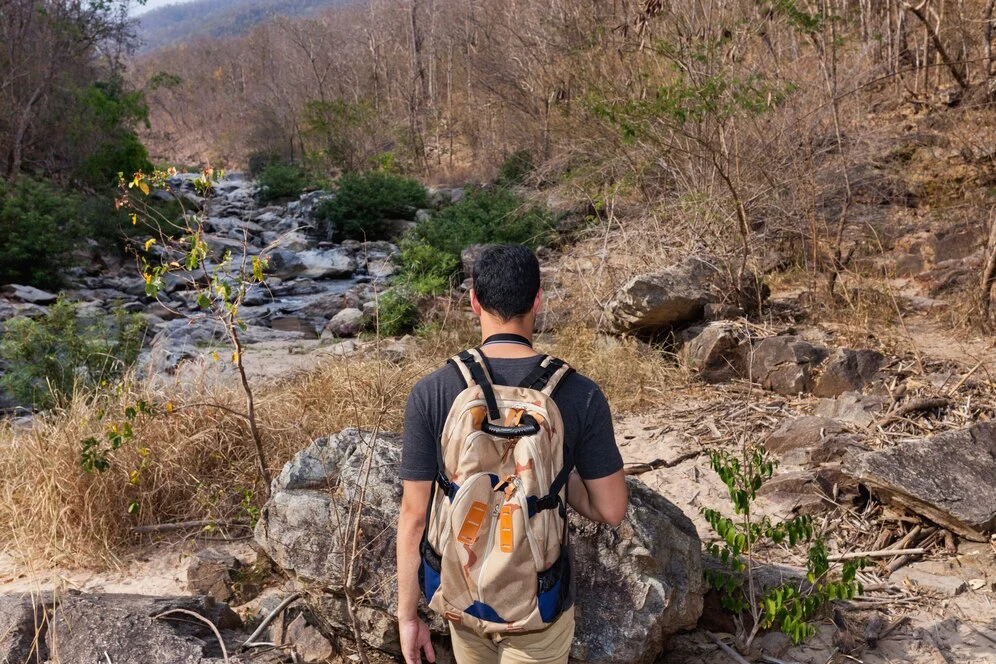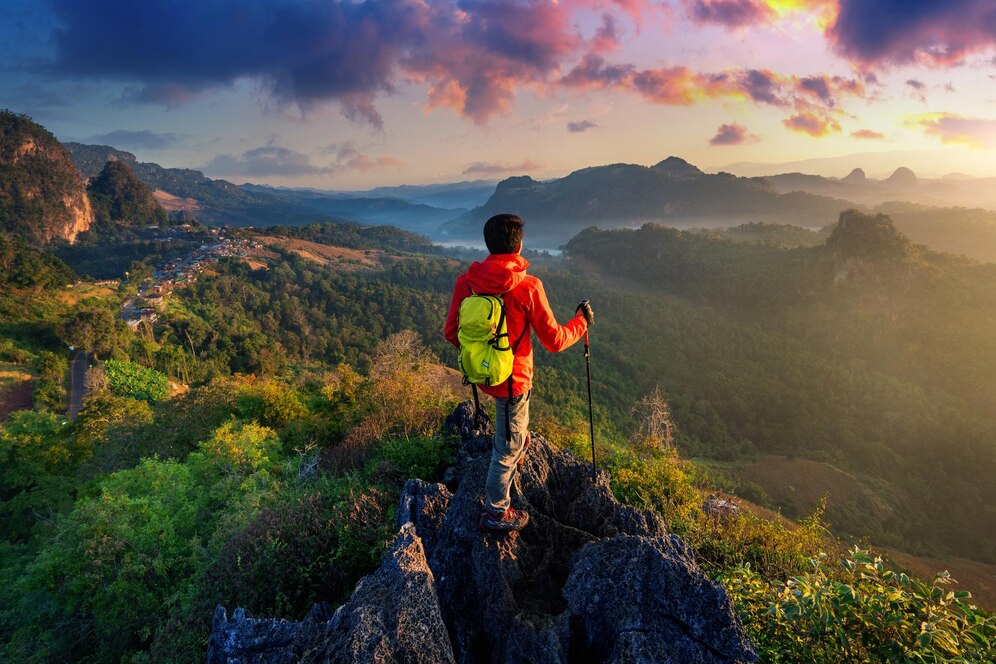As outdoor enthusiasts, we all have our own reasons for hitting the trails.
Some of us seek adventure and adrenaline rushes, while others find solace in the peacefulness of nature. No matter what draws you to hiking, it’s an experience unlike any other.
However, there can be mixed feelings among hikers when it comes to solo hiking.
On one hand, it offers a sense of freedom and independence that is unmatched by group hikes. On the other hand, safety concerns can arise and deter some from venturing out alone on the trails.
If you want to try solo hiking but feel hesitant or unsure about how to approach it safely and confidently, then this blog post is for you.
We’ll be discussing important solo hiking tips and considerations that will help make your solo hiking adventures a success:
Related Blogs:
Best Solo Hiking Tips And Tricks For Beginners
Let’s take a look at how to hike alone without compromising your security:
1. Plan Your Route & Share It

Alright, first things first—plan out your hiking route.
Check out the trail map, know the distances, and be aware of any tricky spots or surprises along the way.
Once you’ve got your route figured out, don’t keep it a secret. Share all the details with someone you trust—a friend, family member, or even a neighbor.
Let them know where you’re starting, when you plan to return, and any major landmarks you’ll hit.
It’s like having a safety net in case things don’t go as planned.
2. Pack Essential Gear & Navigation Tools
You’ll want to pack the essentials to keep you covered. Grab a map of the area, a trusty compass, and a GPS device if you’ve got one.
Make sure you know how to use these tools beforehand—no shame in practicing in your living room.
Toss in a multi-tool, a flashlight, some spare batteries, and don’t forget a solid backpack to carry it all.
Packing essential gear is one of the essential solo hiking tips you shouldn’t ignore.
3. Carry Enough Water & Snacks

Hiking can be thirsty work, so don’t skimp on the water. Pack enough to keep you hydrated throughout the trek.
If you’re not sure about water sources on the trail, consider using a hydration system or bring along some water purification tablets—better safe than sorry.
And don’t forget the snacks.
Load up on lightweight, energy-boosting munchies. Granola bars, nuts, and dried fruit are your hiking buddies—they’ll keep you going when the trail feels endless.
4. Wear Weather-Appropriate Clothing
Check the weather forecast before you head out, and dress accordingly.
If it’s sunny, slap on some sunscreen and don a wide-brimmed hat. If it’s chilly, layer up with breathable, moisture-wicking clothes.
A good pair of sturdy, comfortable hiking boots is a must. Trust us, your feet will thank you later.
Oh, and don’t forget a lightweight, waterproof jacket—weather can be as unpredictable as your uncle’s barbecue skills.
5. Bring A First Aid Kit & Know Basic First Aid
Pack a first aid kit with all the basics—bandages, antiseptic wipes, pain relievers, and anything else you think you might need. But here’s the kicker: make sure you know how to use it.
Take a basic first aid course or at least familiarize yourself with the essentials.
You never know when that knowledge might come in handy, and it’s like having a superhero power in the wild.
6. Be Aware Of Wildlife And How To React
Nature’s got its own cast of characters, so it’s good to be in the know.
Educate yourself about the wildlife in the area—whether it’s bears, snakes, or squirrels with attitude. Know how to react if you encounter them.
Keep a safe distance, make some noise to let them know you’re coming, and never feed the animals.
Being aware of wildlife and how to react is one of the finest ways to stay safe on a solo hiking trip.
7. Check The Weather Forecast

Mother Nature can be a bit moody, so checking in with her before you hit the trail is a good idea.
Take a look at the weather forecast for the day of your hike. Knowing what you’re up against—rain, sunshine, or a bit of both—helps you prepare better and prevents you from being caught off guard.
8. Stick To Designated Trails
Think of the trail like a dance floor, and you’re doing the nature tango.
Stick to designated trails to minimize your impact on the environment.
Going off-trail might seem adventurous, but it can disturb delicate ecosystems and, trust us, you don’t want to mess with Mother Nature’s dance floor.
Follow the rules, stay on the path, and leave only your footprints.
9. Bring A Communication Device
In the age of smartphones, there’s no excuse not to bring one along. It’s your lifeline in case of an emergency.
Whether it’s a cellphone or a fancy satellite messenger, having a way to call for help is a crucial solo hiking tip.
Just make sure your device is fully charged before you hit the trail, or else it’s just dead weight.
10. Stay Vigilant & Enjoy The Journey

Last but not least, keep your eyes and ears open. Stay vigilant and be aware of your surroundings. Enjoy the sights, sounds, and smells of nature.
Solo hiking is not just about reaching the destination—it’s about the journey.
Take your time, breathe in the fresh air, and soak in the beauty around you.
Over To You
As we come to the end of this blog post, it is clear that solo hiking can be both a challenging and rewarding experience.
We have discussed important tips such as thorough planning, packing the right gear and staying safe on the trail.
But more importantly, we have highlighted the importance of being mentally prepared for any obstacles that may come your way.




